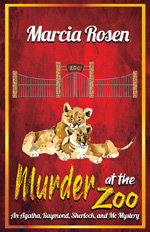Donald Willerton is the award-winning author of the ten-book Mogi Franklin mystery series for middle-grade readers plus four novels in various genres for adults. His most recent adult release is Death in the Tallgrass: A Young Man’s Journey Through the Western Frontier (July 2023) that has been described as “a beautiful, smart, engaging, enraging book…gentle and thoughtful and fierce.” Look for Don on his website at DonaldWillerton.com and on his Amazon author page.
 What would you like readers to know about the story you tell in Death in the Tallgrass?
What would you like readers to know about the story you tell in Death in the Tallgrass?
The novel centers around the kidnapping of a 10-year-old boy, Sam, by Comanche warriors in 1870. Sam is declared dead soon afterwards. Lucy, his six-year-old sister, goes on with a wealthy but rocky life until her son, Harry, in 1904, discovers that the family history may have been a lie and Sam may have lived. Following what he thinks are clues to Sam’s life, Harry goes on a wagon trip that begins in Las Vegas, New Mexico, crosses Texas, turns around at Fort Sill, Oklahoma, and retraces its route until it ends on the Goodnight Ranch, east of Amarillo, on the rim of the Palo Duro Canyon.
This is real country. My childhood home was close to the book’s Beale Wagon Road where it crossed the Canadian River; I have photos of wagon swales almost two hundred years old. I picnicked in the same riverbed where Kit Carson led his troops to the First Battle of Adobe Walls in 1864, and I have stood in the meadow where the Second Battle was fought in 1874. I helped harvest wheat in Oklahoma (west of Fort Sill), climbed in the Wichita Mountains, and have driven through the original Goodnight-managed JA Ranch in the canyons of the Palo Duro. I’ve taken the hair-raising road down the Canadian River Escarpment east of Las Vegas to get to Conchas Lake.
As my young, smart, arrogant, rich Harry Bonner rides on that wagon trip, I hope it’s obvious that falling in love with the country is as fundamental to his growing up as it was to my growing up. My passion for Texas sunsets and rain clouds continues after a lifetime.
What challenges did this work pose for you?
My biggest challenge was learning to stop putting in historical anecdotes about the history of the areas and characters mentioned in the book. I wrote long historical passages only peripherally related to what was happening, and at one point, had to delete thousands of words to clear out the clutter to regain my story. That’s one problem with research — sometimes reality is more interesting than fiction.
Another challenge was developing an authentic-sounding spiritual mysticism surrounding Sam’s life during his seven-year Comanche captivity. That mysticism brings Harry in touch with his uncle and drives home the cruel and unjust life that he fought against, which is key to the plot. In some instances, authenticity took precedence over accuracy, but it’s all close to being real.
This is a departure from your middle-grade mysteries and your three other novels — two that move through history to tell their stories (one with a haunted house as a main character) and a third book that is a contemporary morality tale. What inspired the idea for your newest release?
Three years ago, I read The Unlikely Pilgrimage of Harold Fry by Rachel Joyce. I was dazzled by how rationally a character could unexpectedly go out one day on a walk to the Post Office box and not return until 400 miles later. Along the way, he finds redemption, forgiveness, and the love he had so desperately missed in his life. Joyce’s story gave me the construct of a journey allowing disparate stories to be blended with the main action while preserving the emotional cohesion of the characters. Tied in with echoes of Lonesome Dove by Larry McMurtry, I had a solid time period and context to make my story about Sam, Lucy, and their dysfunctional family work.
 Tell us about your main characters and why you chose them to tell your story.
Tell us about your main characters and why you chose them to tell your story.
I created the characters of Sam and Lucy in my seventh middle-grade mystery novel, The Lady in White, about 12 years ago. They existed only as ghostly apparitions, but were key in giving my middle-grade readers the spookiness I desired. For some reason, I couldn’t stop thinking about a ten-year-old boy who grows into a seven-foot Comanche warrior. Sam and his sister reappeared in a more real form in Smoke Dreams, along with the haunted house, but their lives were, again, revealed only in backstory. After failing at writing a sequel to Smoke Dreams, I found a story framework that allowed them to be flesh and blood. My other main characters are Harry, the son of Lucy who sets off on a quest to trail Sam after his capture, and Alice, the lady wagon master who is the trip leader and is responsible for most of Harry’s growing up.
How did Death in the Tallgrass come together after your initial inspiration?
I had the history of the kidnapping from the middle-grade novel, the desire to feature Sam and Lucy in a larger context, and the construct of a journey to build words around, but it was not until I imagined the wagon trip that the basics of the story fell into place. It permitted me to use dreams, backstory narration, and remembrances to characterize the missing thirty-four years of Sam while I described the daily action of Harry and Alice. It took about two years to write and rewrite, including two early submissions to a publisher that I withdrew (ever wake up one day and discover that what you’ve written sounds simply awful?). I finally found my center for the context, actions, crises, and emotions, and produced a workable draft I was happy with. I decided to self-publish, probably because I was too embarrassed to submit a third time.
Through Reedsy, I hired an editorial reviewer who confirmed the strength of the story and its goodness, and the characters with the depth I had intended. He also corrected many errors and story conflicts. After incorporating his suggestions, I hired (again through Reedsy) a copy editor who did an excellent job of helping me clarify, delete, simplify, and resolve all of the loose ends to make the story feel right and complete. I did not finalize the last chapters until after having done both edits, but, by then, I knew exactly what they needed to do. My cover came from a media artist who responded to an internet request through Reedsy. Given a list of my ideas and only a brief description of the novel, she sent an initial design that nailed it on the first try. I was lucky.
Why did you choose Death in the Tallgrass as the title of the book?
I had several initial ideas, but my first official title was The Biggest Cowboy in the World, which I thought was clever, eye-catching, and was drawn from the novel’s text. An early reviewer (an honest, true-to-God, steeped in history, Texas cowgirl with family ties going back to Charlie Goodnight) thought it was silly and would alienate Western-loving readers. She suggested using “tallgrass” in the title which was a common descriptor of grass in the Great Plains. I liked the word, read some about the preserved areas of grasslands in the Plains, and added “death” to make it dramatic.
What was your favorite part of putting this project together?
Editing, to me, is using the authority to change anything I want, with a heavy emphasis on deleting whatever I can’t explain. With my latest book, both editors were so affirming of the storyline that I was overwhelmed by their encouragement. Afterward, editing was like polishing a jewel — every change made it better, and I fell even more in love with what I had written.
 Of the fourteen books you’ve written, which one was the most challenging and which was the most enjoyable to write?
Of the fourteen books you’ve written, which one was the most challenging and which was the most enjoyable to write?
The most challenging was The King of Trash. The story addresses the problems of ocean pollution and of homelessness, but by the end of the book, I could propose no meaningful solution for either. Even though the novel has a satisfactory ending, I feel a sense of lost opportunity.
The most enjoyable novel was The Lost Children, the second of my Mogi Franklin Mysteries. Beginning with a naturally endearing incident of three children mysteriously disappearing in 1891 in Ouray, Colorado, I added an old mining story out of the Gold Rush days of California that gave the tale a unique and gripping solution. In the end, combining the emotions and the facts gave me a story that grabs the heart of the reader.
Do you prefer the creating or editing aspect of writing? How do you feel about research?
I like editing. It allows me to identify and confess all the errors I find, and to feel redeemed when I correct them. Research is a natural requirement to make my writing credible and authentic. I’ve never had trouble being appreciative of non-fiction.
Do you have a message or a theme that recurs in your writing?
I’ve always written my middle-grade mysteries as a combination of history, geography, and adventure, hoping the readers will learn about the Southwest as well as being entertained. My adult books have been less deliberate, but I hope my characters show their need to live by grace.
What writing projects are you working on now?
I’ve begun a Dan Brown-ish type of mystery involving the Large Hadron Collider in Switzerland and the Shroud of Turin.
Is there anything else you’d like readers to know?
An audiobook (my first) is being produced for Death in the Tallgrass. I’m anxious to hear how it sounds, and how it is received by listeners. I hope those who listen will leave reviews.
 KL Wagoner (writing as Cate Macabe) is the author of This New Mountain: a memoir of AJ Jackson, private investigator, repossessor, and grandmother. Kat has a speculative fiction blog at klwagoner.com and writes about memoir at ThisNewMountain.com.
KL Wagoner (writing as Cate Macabe) is the author of This New Mountain: a memoir of AJ Jackson, private investigator, repossessor, and grandmother. Kat has a speculative fiction blog at klwagoner.com and writes about memoir at ThisNewMountain.com.



 Su Lierz writes dark fiction, short story fiction, and personal essays. Her short story “Twelve Days in April,” written under the pen name Laney Payne, appeared in the 2018 SouthWest Writers Sage Anthology. Su was a finalist in the 2017 and 2018 Albuquerque Museum Authors Festival Writing Contest. She lives in Corrales, New Mexico, with her husband Dennis.
Su Lierz writes dark fiction, short story fiction, and personal essays. Her short story “Twelve Days in April,” written under the pen name Laney Payne, appeared in the 2018 SouthWest Writers Sage Anthology. Su was a finalist in the 2017 and 2018 Albuquerque Museum Authors Festival Writing Contest. She lives in Corrales, New Mexico, with her husband Dennis.







